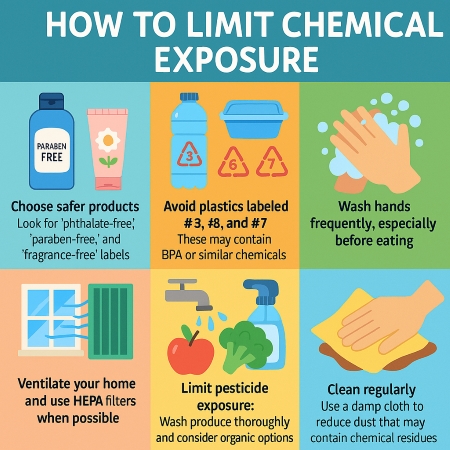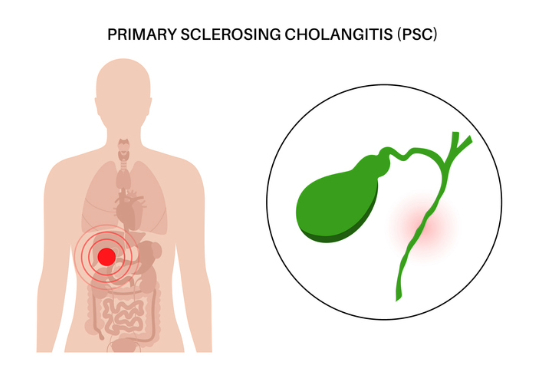New study: U.S. preschoolers exposed to broad range of potentially harmful chemicals
Findings concern researchers because early childhood is a critical period for brain and body development
A national study published in Environmental Science & Technology finds children aged 2 to 4 years in the United States are routinely exposed to a broad range of potentially harmful chemicals. Many of the chemicals the researchers identified are not routinely monitored and may pose health risks.
The research was conducted by multiple institutions across the United States in coordination with the Environmental influences on Child Health Outcomes (ECHO), a program supported by the National Institutes of Health (NIH).
The researchers analyzed urine samples from 201 children aged 2 to 4 years. They tested for 111 chemicals. Their study found:
- 96 chemicals were detected in at least five children.
- 48 chemicals were found in over half of the children.
- 34 chemicals were detected in more than 90% of children — including nine chemicals not currently tracked in national health surveys like the National Health and Nutrition Examination Survey (NHANES).
“Our study shows that childhood exposure to potentially harmful chemicals is widespread. This is alarming because we know early childhood is a critical window for brain and body development,” said Deborah H. Bennett, lead author and UC Davis professor in the Department of Public Health Sciences. “Many of these chemicals are known or suspected to interfere with hormones, brain development and immune function.”
Our study shows that childhood exposure to potentially harmful chemicals is widespread. This is alarming because we know early childhood is a critical window for brain and body development.”—Deborah Bennett, professor, UC Davis Department of Public Health Sciences
Children exposed to chemicals through everyday activities
The NIH-funded ECHO Cohort combines data from pregnancy and pediatric cohorts to examine the impacts of early environmental exposures on child health and development. This study looked at samples of 201 children from four states (California, Georgia, New York and Washington).
The researchers looked for childhood exposure to common environmental chemicals, including:
- Phthalates and phthalate alternatives used in plastics like toys and food packaging, as well as personal care products and household items.
- Parabens commonly used in cosmetics, lotions, shampoos and pharmaceuticals.
- Bisphenols found in plastic containers, food can linings and thermal paper receipts.
- Benzophenones found in sunscreens, cosmetics and plastics.
- Pesticides used in agricultural and residential pest control.
- Organophosphate esters (OPEs) used as flame retardants in furniture and building materials and as plasticizers in food packaging.
- Polycyclic aromatic hydrocarbons (PAHs), byproducts of combustion found in vehicle exhaust, grilled foods and tobacco smoke.
- Bactericides found in antibacterial soaps and personal care products.
Children are exposed to these environmental chemicals through everyday activities, such as eating, drinking, breathing indoor and outdoor air and touching contaminated surfaces.
Frequent hand-to-mouth contact, playing close to the ground, and higher intake rates relative to their smaller body weight make kids especially vulnerable to chemical exposure.
Trends and disparities
In addition to the widespread exposure, the researchers noted some trends.
- Levels of triclosan, parabens, PAHs and most phthalates decreased over the years the samples were collected (from 2010 to 2021).
- An alternative plasticizer, DINCH (di-iso-nonyl-cyclohexane-1,2-dicarboxylic acid), and emerging pesticides, such as the neonicotinoid acetamiprid, pyrethroid pesticides, and the herbicide 2,4-, showed an upward trend.
- Firstborn children had significantly lower chemical levels than their younger siblings.
- Chemical levels were often higher in younger children (age 2) than in 3- or 4-year-olds.
- Children from racial and ethnic minority groups had higher levels of parabens, several phthalates and PAHs.
Most of the children’s mothers had provided urine samples during pregnancy. This allowed the researchers to analyze the chemicals in the mother’s urine with those in the children’s urine.
They found the children had higher levels of several chemicals than their mothers did during pregnancy. These included two phthalates, bisphenol S (often used as a BPA replacement) and the pesticide biomarkers 3-PBA and trans-DCCA.
Need for more monitoring and regulation
The researchers emphasize that further studies are necessary to comprehend the long-term health implications of these chemicals.
“Exposure to certain chemicals in early childhood — such as pesticides, plasticizers and flame retardants — has been linked to developmental delays, hormone disruption and other long-term health issues,” said Jiwon Oh, first author of the study and a postdoctoral scholar in the UC Davis Department of Public Health Sciences. “This new study highlights the urgent need for expanded biomonitoring and stronger regulations to protect children from harmful exposures.”
A complete list of authors and funders appears in the paper.
How to limit chemical exposure

It is impossible to eliminate all exposures, but there are steps people can take to reduce contact with harmful chemicals.
It is impossible to eliminate all chemical exposures. Yet, there are many simple steps parents can take to help reduce their children’s contact with harmful chemicals.
- Choose safer products: Look for “phthalate-free,” “paraben-free” and “fragrance-free” labels.
- Avoid plastics labeled #3, #6, and #7: These may contain BPA or similar chemicals.
- Wash hands frequently, especially before eating.
- Ventilate your home and use HEPA filters, when possible.
- Limit pesticide exposure: Wash produce thoroughly and consider organic options.
- Clean regularly: Use a damp cloth to reduce dust that may contain chemical residues.





